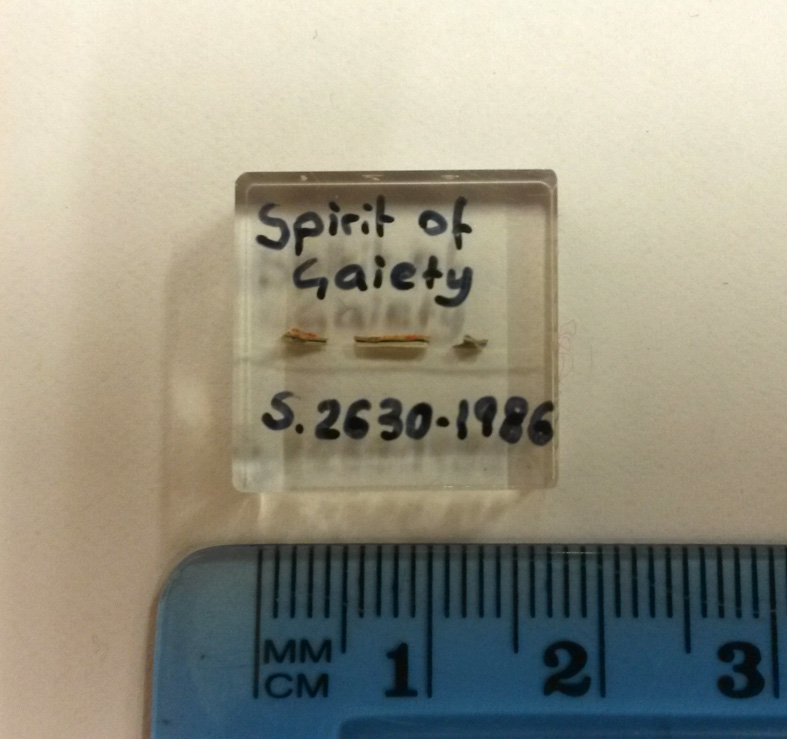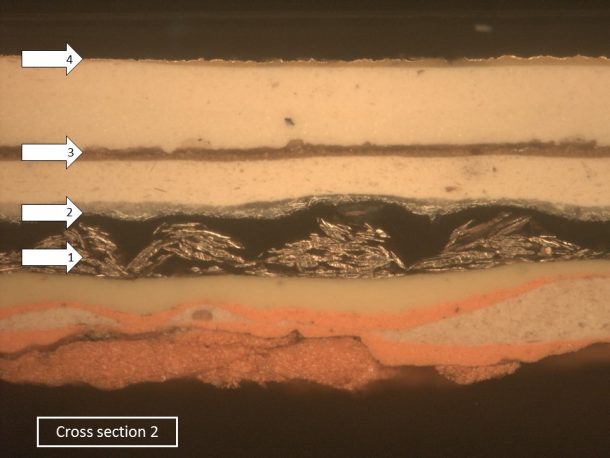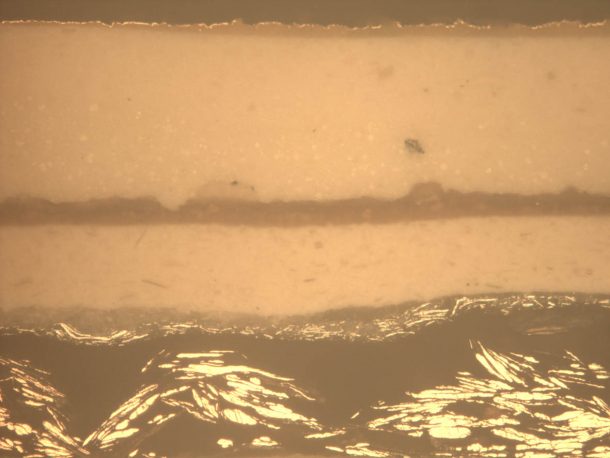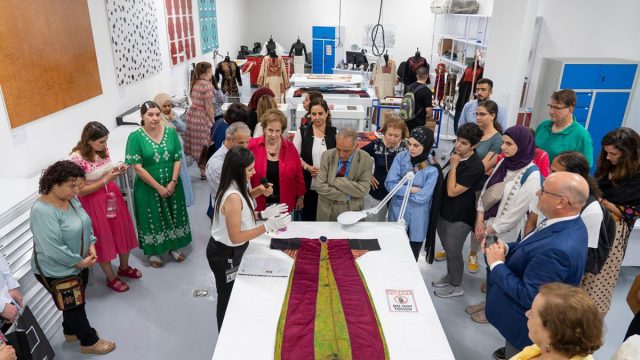This series of blog entries is about the scientific examination of the gold finish of the Spirit of Gaiety, the angel which once graced the dome of the Gaiety Theatre in London.
Optical Microscopy
A few days ago I outlined the reasons why we are investigating the gilding of the Gaiety Angel. Here is an account of the first steps of our scientific investigation, which involved the use of optical microscopy:
I embedded the paint samples in clear polyester resin (Figure 1) in order to inspect the layer structure of the paint. Then I viewed the samples under a microscope using white light and ultraviolet light.

The samples showed very clearly that at least four paint schemes, each containing its own layer of ‘gilding’ or ‘silvering’, are present on the surface of the Angel (Figure 2):

- The earliest visible scheme, marked as 1 in Figure 2, is made of gold-coloured filings. Their appearance suggests that they are made of bronze or brass paint.
- The second scheme, marked as 2, is made of finely divided, silver-coloured metal paint.
- The third scheme contains a barely visible, corroded layer of silver-coloured leaf.
- And finally the fourth scheme, which is what gives the current golden appearance to the Angel, looks like it contains gold leaf.
There is a way of looking at samples under the microscope that enhances the metallic-looking layers and shows off their ‘colour’, and tells us if they look more like silver or gold. This also shows off the texture and relative thickness of the metal layers. You can see this in Figure 3.

Viewing our samples under a high-power optical microscope can give us a good indication of what the likely composition of the metallic finishes is. But we need incontrovertible proof, and for this reason we will be using a technique called X-ray fluorescence, or XRF for short.
I will tell you about our XRF results in the next blog in a few days’ time.


